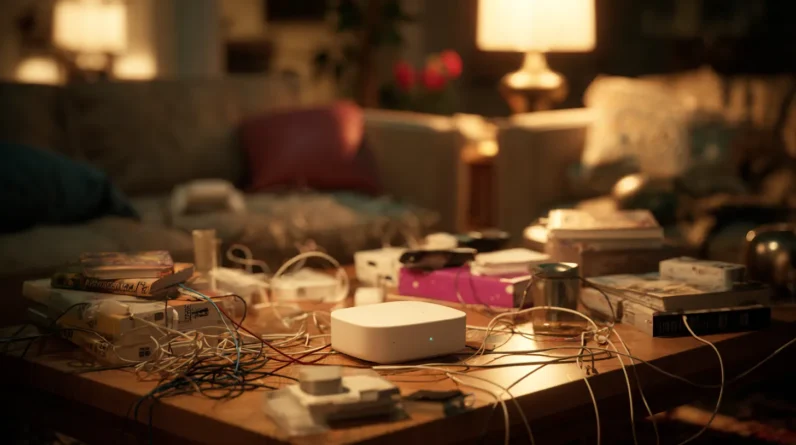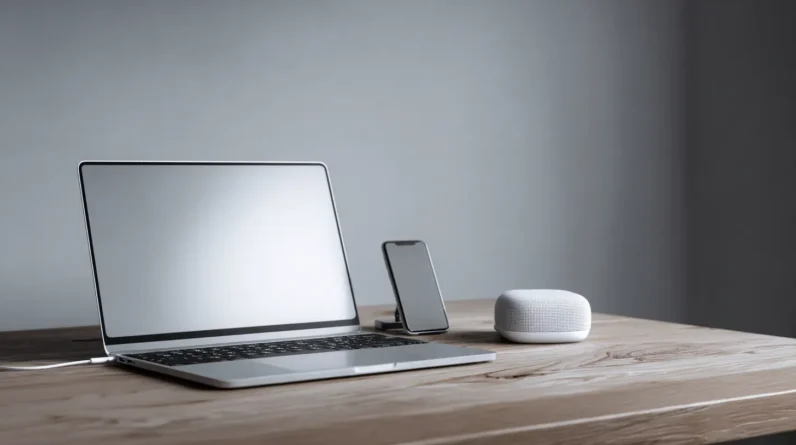
We’re excited to make our homes smarter, and it all starts with setting up voice assistants. First, we choose an ecosystem that fits our devices and needs, considering compatibility, ease of use, and security. Then, we set up a central hub like Google Home or Amazon Alexa, which enables seamless communication between devices and allows us to control lighting, thermostats, and security systems with ease. Don’t forget a stable Wi-Fi connection – we choose the right frequency for our setup.
Understanding Smart Home Ecosystems
As we commence on setting up voice assistants, we must first grasp the nuances of the various smart home ecosystems available, each promising a unique set of benefits and features. We’re spoiled for choice between Google Assistant, Alexa, and Apple HomeKit, each with its strengths. Google Home offers quick voice command responses and easy access to smart-home shortcuts. Alexa boasts the widest range of compatible products and supports third-party Skills. Apple HomeKit is the best option for iPhone owners, with smooth device operation and strong security features.
When selecting an ecosystem, we must consider compatibility with different devices, ease of setting up and using, and security with voice commands. By choosing the right ecosystem, we can create routines, control smart lighting, and unveil the full potential of our smart homes with voice.
Role of a Hub in Smart Homes
We centralize control of our smart devices with hubs like Google Home and Amazon Alexa, which serve as the nerve center of our smart home ecosystem. These smart hubs enable seamless communication between different devices, ensuring a cohesive and unified experience. They act as the brain of our smart home, allowing us to manage and monitor our devices efficiently. With a user-friendly interface, we can control various aspects of our smart home, such as lighting, thermostats, and security systems.
Having a hub in our smart home setup enhances automation capabilities and simplifies the management of multiple devices. By incorporating voice assistants into our hub, we can enjoy a truly unified experience, making our lives easier and more convenient.
Importance of Wi-Fi Connectivity
Our smart home’s reliability hinges on a stable Wi-Fi connection, which is crucial for seamless communication between devices and the hub. A reliable connection guarantees that our smart devices function properly, and we can control them effortlessly. Here are some key aspects to keep in mind when setting up our Wi-Fi connection:
– We can utilize the 2.4 GHz frequency for its longer range, or choose the 5 GHz frequency for faster speeds in our smart-home setup.
– Wi-Fi 6E, supporting 6 GHz, offers even faster speeds, improved device handling, and better power efficiency.
– This newer standard also enhances security measures for our smart-home networks, providing us with peace of mind.
– By selecting the right Wi-Fi frequency, we can ensure a seamless and secure experience in our smart home.
Setting Up Your Voice Assistant
With our Wi-Fi connection set up, let’s configure our voice assistant to access its full potential. We’ll start by downloading the respective app for our Smart Home devices, whether it’s Amazon Echo or Google Home. Using these apps, we can customize sound cues and device location settings for a personalized experience with our voice assistant. We’ll also link our music services, like Spotify or Amazon Music, to enjoy seamless music requests.
Moreover, we’ll set up communication features like phone calls and Caller ID settings to enhance our voice assistant’s functionality. By doing so, we’ll be able to efficiently interact with our Voice Assistants Work, making our Home smarter and more convenient.
Creating Routines and Voice Commands
By crafting custom voice commands and routines, you can automate specific tasks and sequences, making your smart home even more responsive to your needs. This allows us to Create routines that make our life easier, such as turning on the lights or adjusting the thermostat with a single voice command. We can also personalize voice commands for individual devices, like smart switches, to enhance the automation experience. Here’s how we can take it to the next level:
– Use voice commands to control multiple devices that are compatible with our smart home setup
– Create specific voice commands for different actions to streamline daily tasks
– Utilize voice commands to trigger multiple actions at once, enhancing the efficiency of our smart-home setup
– Set up routines for automated actions, allowing us to reach the Full Potential of our smart home
Enhancing Security and Privacy
We take control of our voice assistant’s security and privacy settings to safeguard our personal data and prevent potential breaches. We regularly review and understand the privacy policy to guarantee our data is handled securely. We also turn off the microphone when not in use to prevent unintentional recording of private conversations. Keeping software and firmware updated is vital to protect against security vulnerabilities. When sharing sensitive information, we’re cautious to minimize the risk of data breaches.
We’re aware of the risks associated with third-party apps and devices that may have access to our voice assistant data. By taking these measures, we’re ensuring our voice assistant’s data security and maintaining control over our personal information.
Integrating With Smart Devices Seamlessly
Our voice assistants can seamlessly connect with a wide range of smart devices, from thermostats and lighting systems to security cameras and kitchen appliances, to create a convenient and automated smart home experience. This incorporation allows us to use voice commands to turn devices on and off, set routines, and even save energy and money by optimizing our smart thermostats. Here are some benefits of incorporating voice assistants with smart devices:
– We can control multiple devices with a single command, making it easy to turn off lights or adjust the temperature with just our voice.
– Voice recognition technology improves over time, allowing for more accurate control of our devices.
– We can create custom routines that automate tasks, such as locking doors and turning off lights when we leave the house.
– The incorporation of voice assistants with smart technologies enables us to use our devices more efficiently, making our lives easier and more convenient.
Future of Voice-Activated Smart Homes
As voice-activated smart homes continue to advance, they’re poised to revolutionize the way we live and interact with our surroundings. We’re excited to see the merging of augmented reality (AR) and virtual reality (VR) technologies, enabling immersive experiences like never before. Anticipatory AI will play an essential role, allowing voice assistants to take predictive actions based on our habits and preferences. Advancements in artificial intelligence will enhance natural language processing and machine learning capabilities, resulting in seamless interactions.
We expect to see the holistic unification of devices, providing extensive voice control functionalities and personalized experiences tailored to our individual preferences. With these innovations, our homes will become even more intuitive and responsive, making our lives easier and more enjoyable.
Conclusion
As we wrap up our smart home journey, we’ve bridged the gap between our living spaces and the digital world. By harmonizing our voice assistants, devices, and routines, we’ve created a symphony of convenience, efficiency, and comfort. With a touch of creativity and a hint of tech-savviness, our abodes have transformed into intuitive, responsive, and personalized sanctuaries – the perfect blend of human ingenuity and artificial intelligence.







